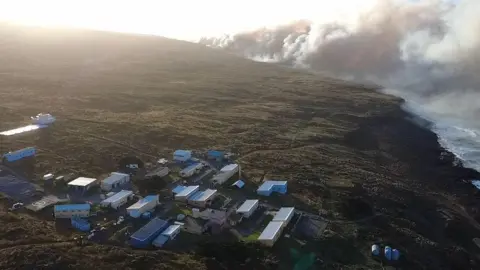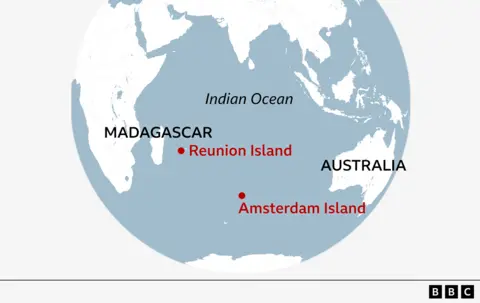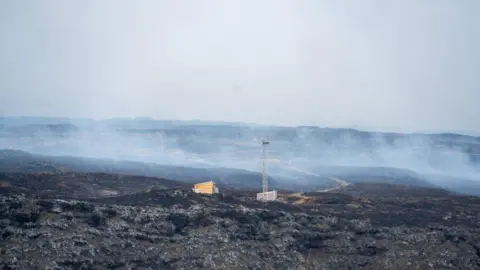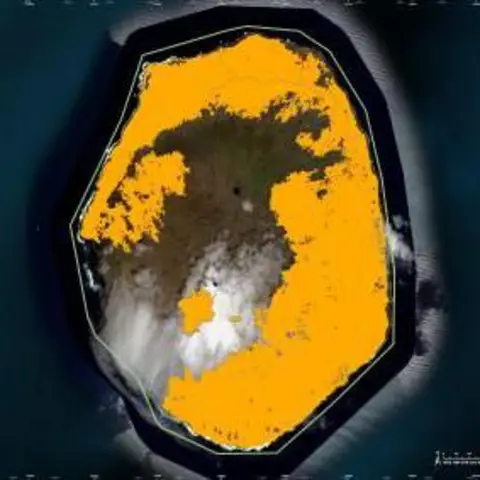 Southern and southern French lands
Southern and southern French landsNearly a month ago, French lands were flooded on the island of Amsterdam in the southern Indian Ocean in fire.
The island is around the middle of the road between Australia and the Antarctica continent and Madagascar, and it has witnessed more than 55 % of an area of 54 square kilometers.
Amsterdam Island has no permanent population, but researchers have been stationed there since the 1980s.
Since the outbreaks of the fires, 31 people have been evacuated to the island of Reunion, closer to Madagascar. Last week, the French authorities launched a task to control forest fires and evaluate their impact.

 Southern and southern French lands
Southern and southern French landsThe latest fire was discovered on January 15 by a world looking at the air.
According to a report issued by the Climate and Environmental Sciences Laboratory (Lects), it erupted near the Pointe Bénédicte Observatory, which monitors greenhouse gases, mercury, and dread in the air.
Despite the best of the population, the fire spread towards the base of research in Martin-De-Viviès. They were evacuated early in the next day by the Australian lobster fishing boat, which was wandering nearby.
Rémi Chazot, the computer world that was based on the island, told the Le Monde newspaper that the group was “incredibly lucky” that the boat was in the area.
“He should have left this boat a week ago, but it had never caught in the class of the locusts. Otherwise, things became complicated.”
 Copernicus monitoring program
Copernicus monitoring programSince then, the leave has been transferred to reunification, another French region.
The fire spread through the island of Amsterdam due to the dry conditions and strong winds. The island does not have a river and the wind can reach 40 km/h (24 mph). It is believed that a partial spread across the Jazeera swamps network.
Although the full range of damage has not yet been evaluated, satellite pictures showed that the island's solar panels were affected by fire as well as food and communications lines.
Conservatives also expressed concern about the influence of wildlife.
Due to its extraordinary climate, the island is rich in biological diversity, as it works as a raising site for southern fur seals and southern fur.
It is home to several types of peremons including Amsterdam the Patros, which exclusively multiplies on the island, and 84 % of the yellow Patros population in the world. A colony of southern penguins, Rockhopper, also lives on the island.
 Southern and southern French lands
Southern and southern French landsDue to its distant presence and the subsequent lack of pollution, the island is also used to search for changes in the atmosphere and how this affects the climate.
The evacuation is the first time that air research on the island has been suspended for 45 years.
“It will take time and money to return to normal, and this temporary suspension will mean that there are no data in obtaining data for our research,” said Mark delot, director of the Laces mission in the Amsterdam Islands.
“This, of course, is not good news for such a unique site.”
On February 7, the reconnaissance mission sailed on a French marine ship.
According to the Southern and Southern Dripping Administration, the task consists of four firefighters from unification and seven technical staff, one of whom is a doctor.
Instead of completely removing the fire, the task intends to secure the settlement. They will also aim to reveal the cause of the fire and how it is spread, as well as re -establishing the energy of the island and water.




